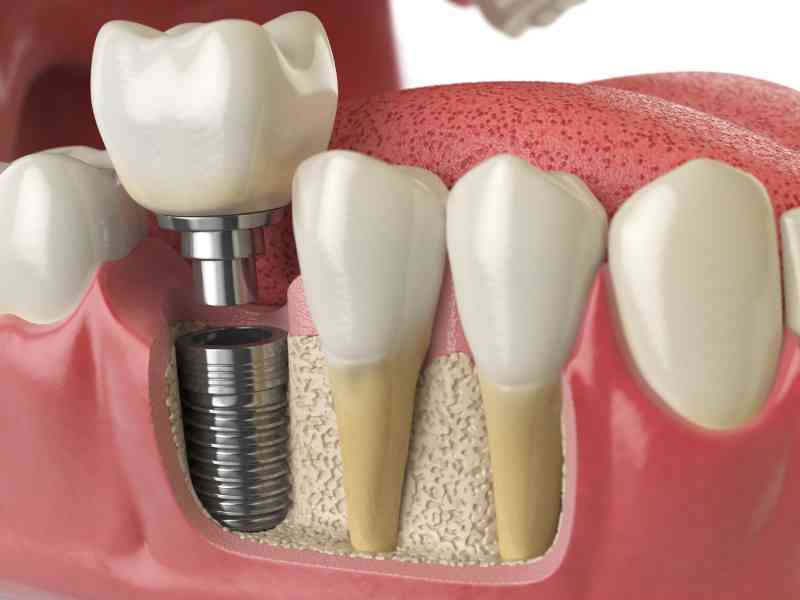
Dental implants are artificial tooth roots used in prosthetic dentistry. They provide a strong and lasting foundation for replacement teeth. Our preferred choice is the osseointegrated implant, which fuses titanium seamlessly with your jawbone for a secure connection between the implant and living bone.
Our experienced team of clinicians, including general dentists, oral surgeons, and periodontists, performs dental implant surgery. The procedure involves placing a titanium screw into your jawbone. Implant surgery can be done with general anesthesia or local anesthesia, depending on your preference and needs.
The healing and integration process, called osseointegration, typically takes several months. Once your implant is firmly in place, our skilled restorative dentists or prosthodontists will use it to anchor crowns or a prosthetic restoration, allowing you to chew and smile with confidence.
Timing of loading the dental implants can also be adjusted according to your preferences and requirements:
Dental implant success is influenced by various factors, including operator skill, bone quality, and patient's oral hygiene. Studies show that the success rate ranges between 90-95%. Smoking can lower success rates, so we encourage our patients to quit smoking before undergoing implant surgery.
We offer complementary procedures such as sinus lifting and bone grafting to ensure you have sufficient bone support for successful implant placement. These procedures are designed to create the ideal environment for your dental implants to thrive.
While there are no absolute contraindications for dental implants, certain systemic, behavioral, and anatomic considerations are taken into account. We assess factors such as bone volume and height, uncontrolled diabetes, and bruxism to ensure the best outcomes for our patients.
With over 100 dental implant companies in the market, we proudly work with trusted names like Nobel Biocare, Straumann, and Zimmer to deliver exceptional results.
Our team of specialists, general dentists, and prosthodontists will collaborate to provide you with the most suitable treatment plan. Whether you're considering dental implants, a bone graft, or any other dental procedure, we're dedicated to ensuring your comfort and satisfaction.
Ready to start your journey towards a brighter smile and restored confidence? Contact us today to schedule a consultation and take the first step toward transforming your dental health with dental implants. Your new smile awaits!
Do you ever feel nervous about dentist appointments? Rest assured: we cater to nervous and anxious patients in a gentle and considerate manner. Call us now to schedule a free consultation!